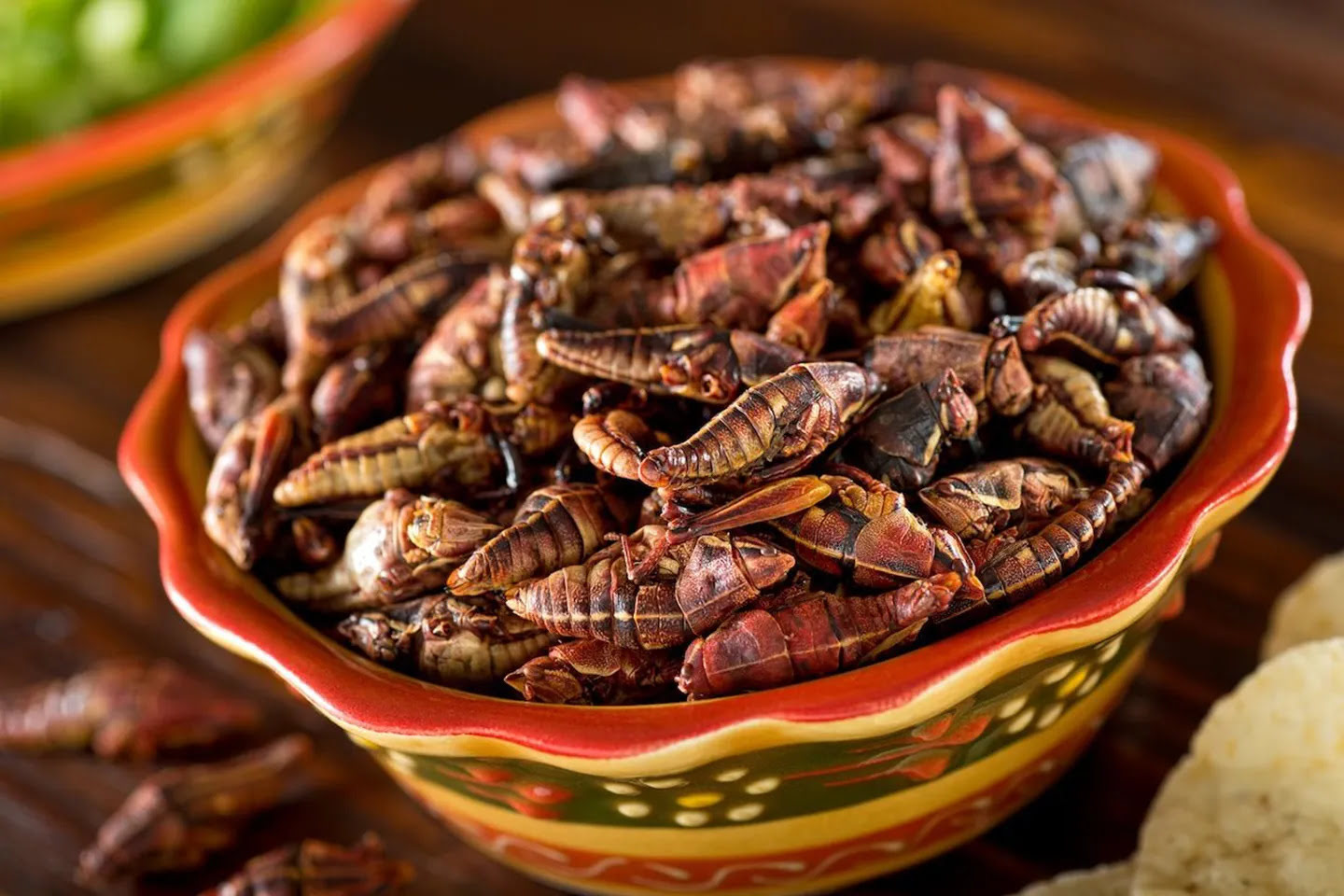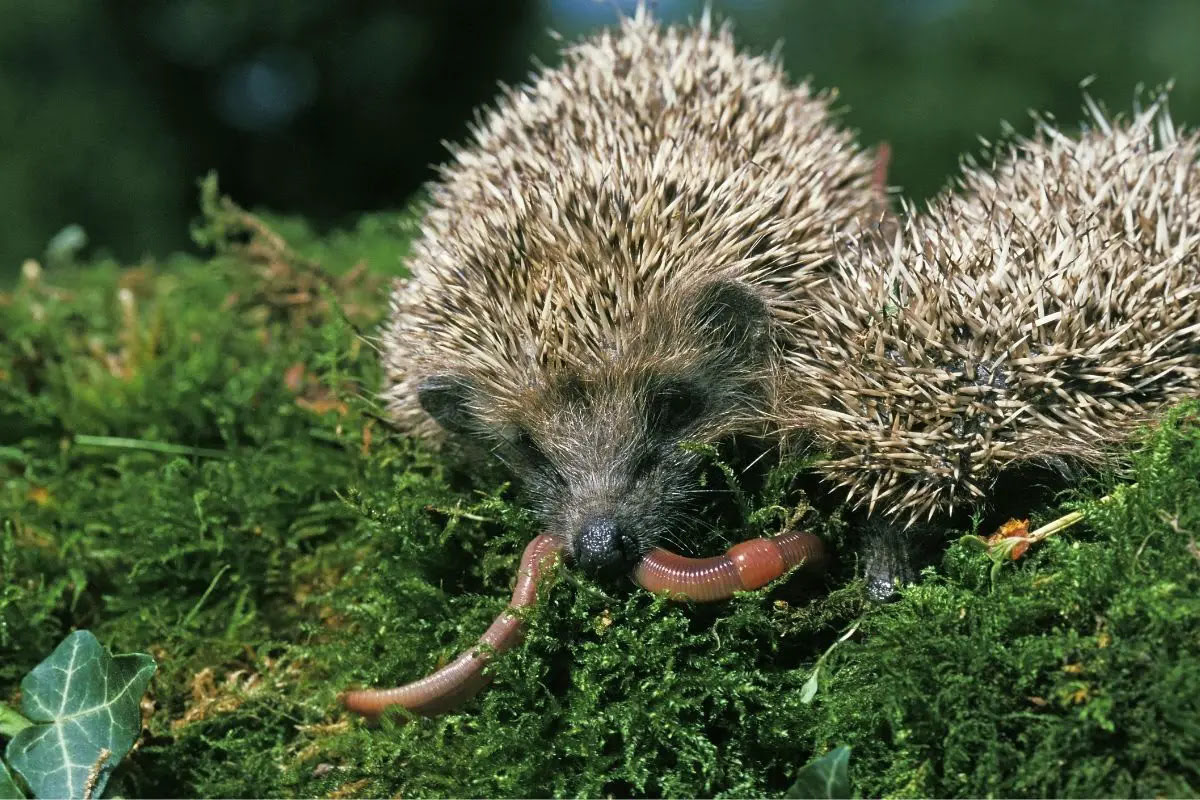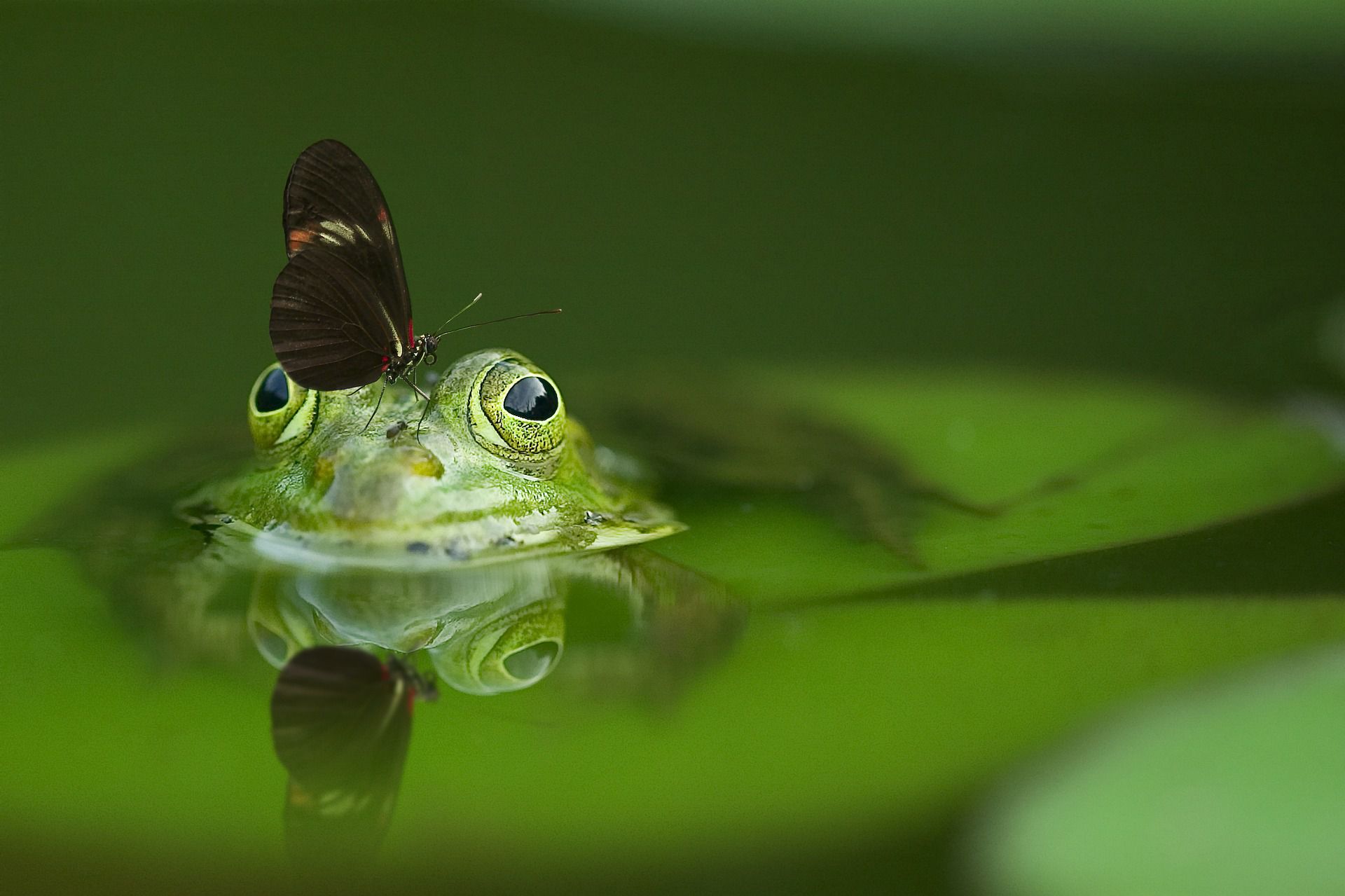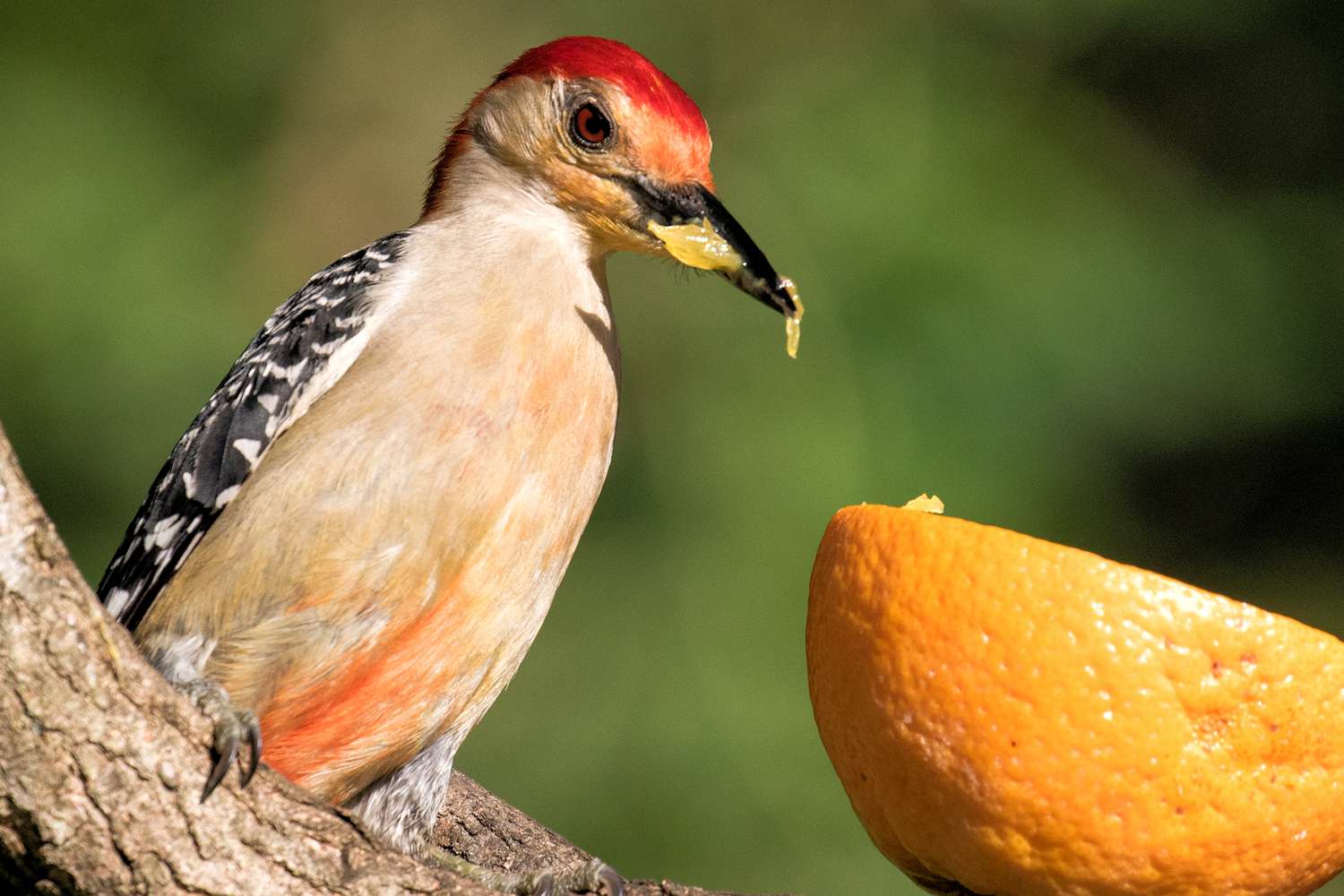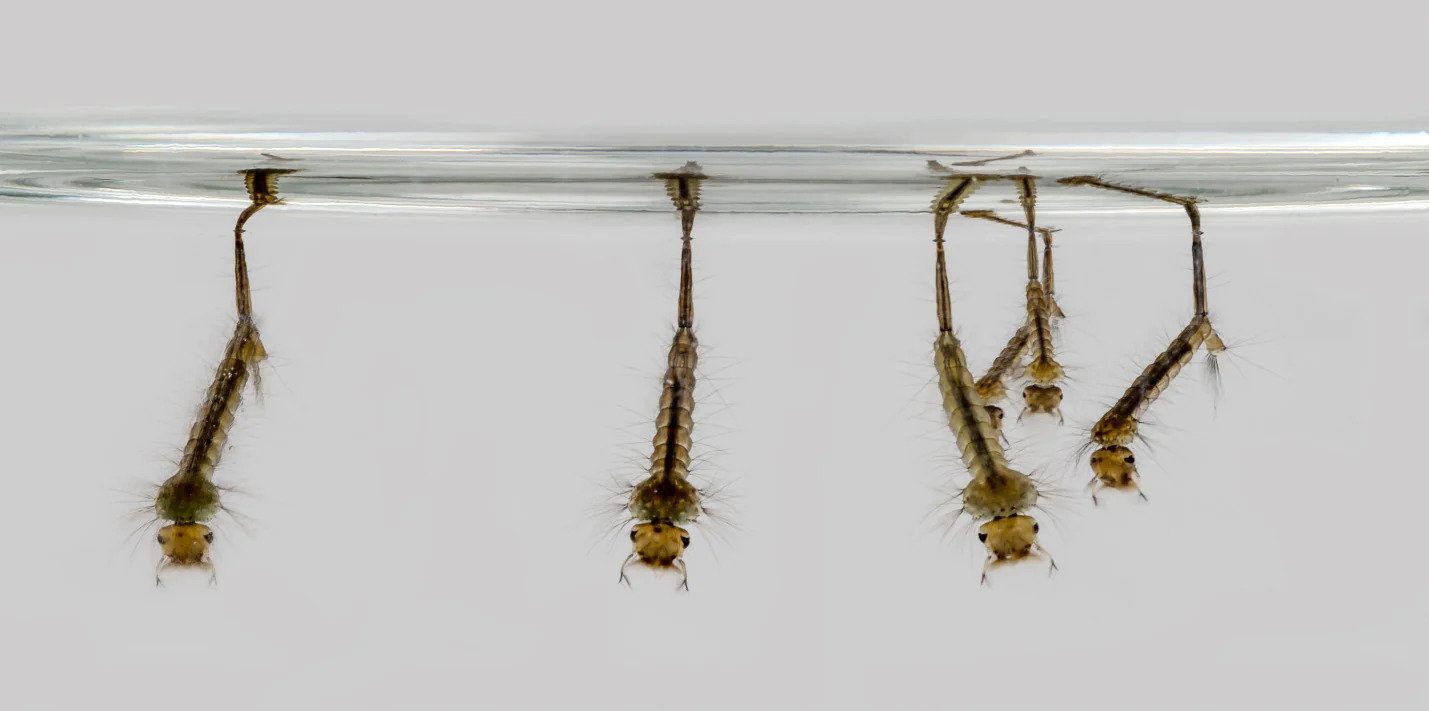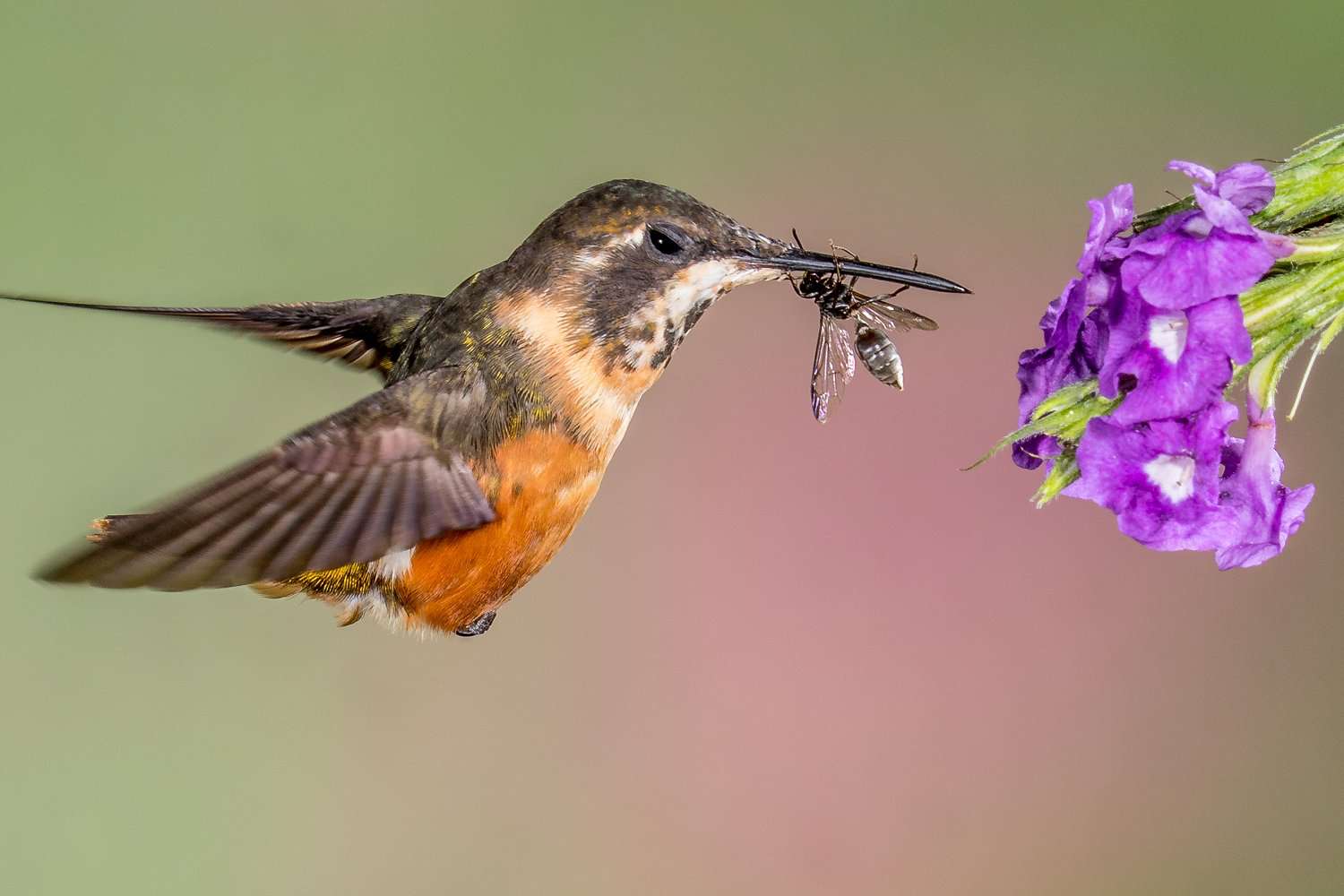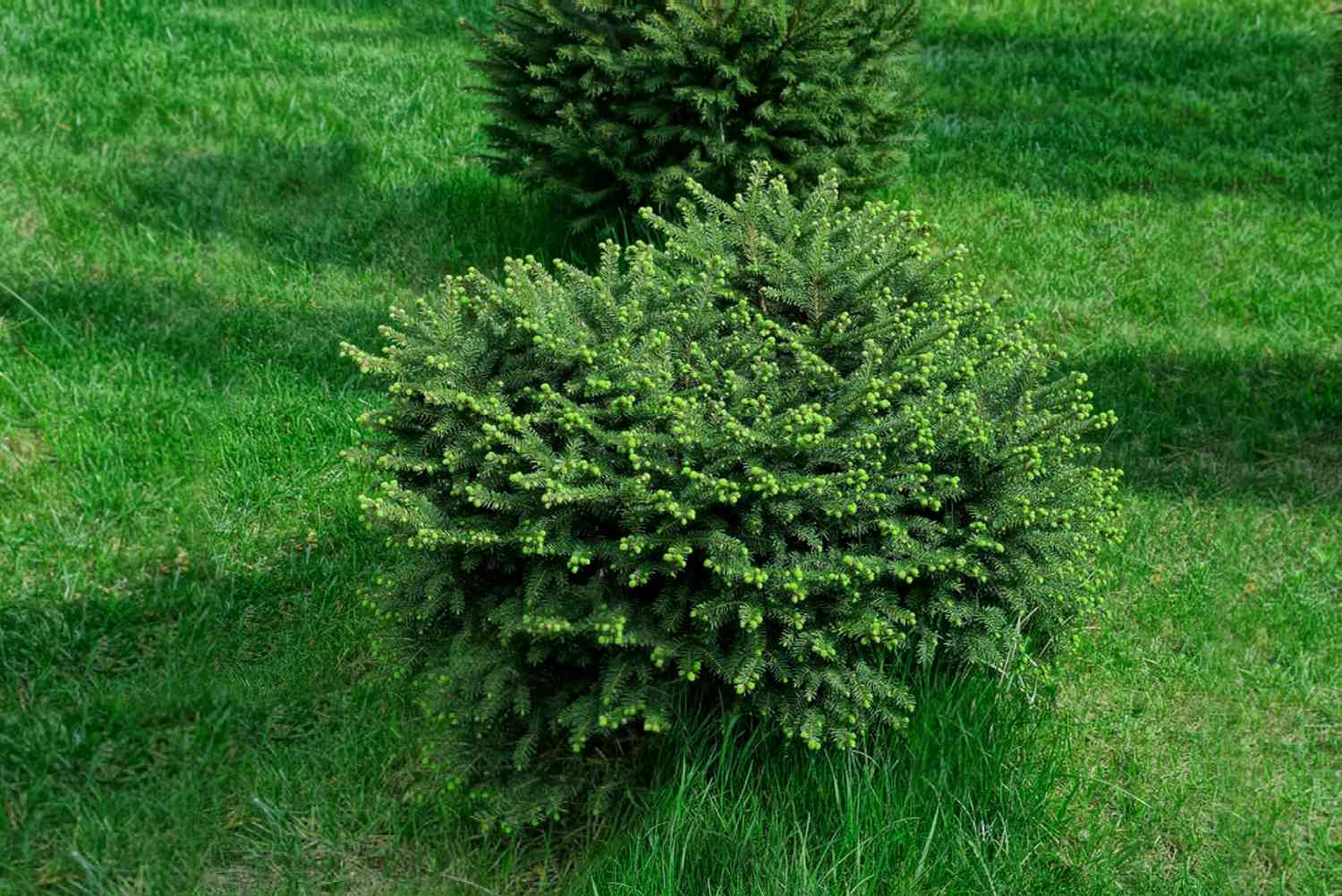Home>Types of Gardening>Ornamental Gardening>What Shrubs Do Deer Not Eat
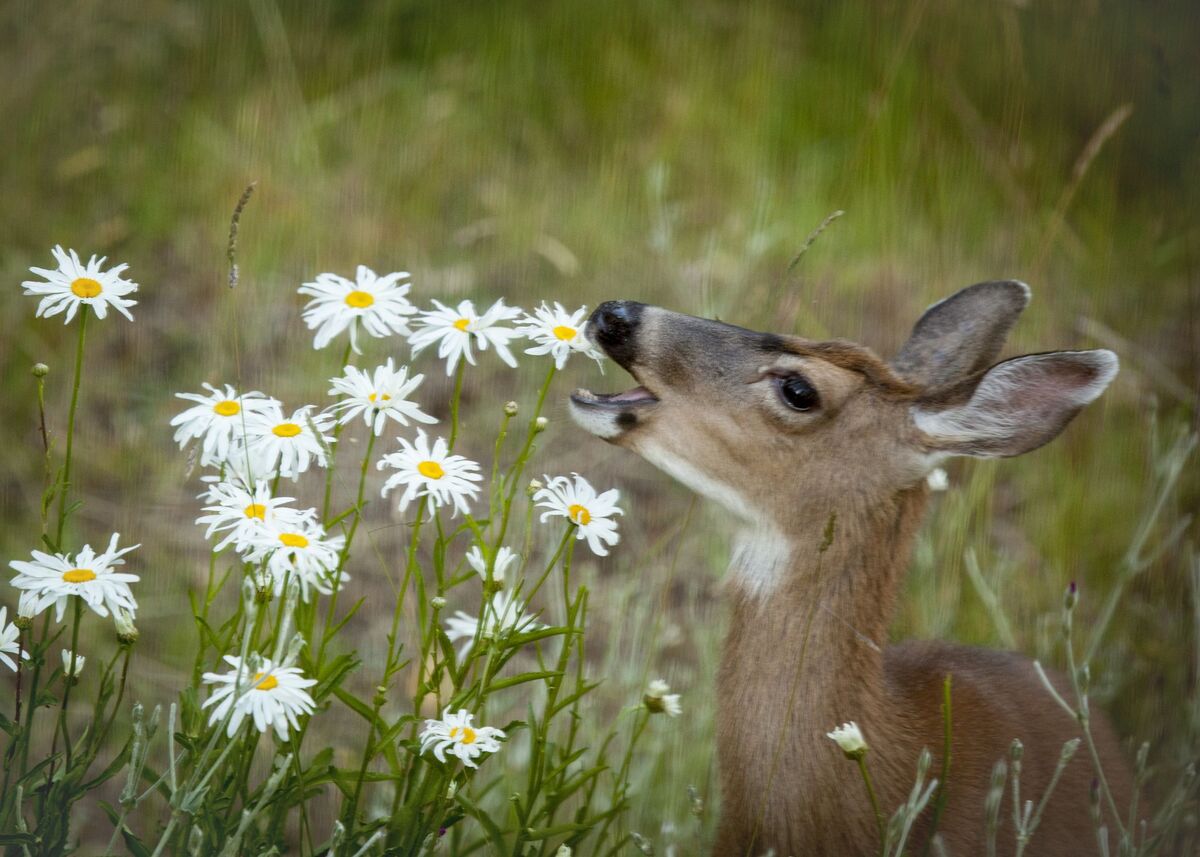

Ornamental Gardening
What Shrubs Do Deer Not Eat
Published: October 18, 2023
Discover the best shrubs for your ornamental gardening that deer won't devour. Create a beautiful deer-resistant garden with our expert tips and suggestions.
(Many of the links in this article redirect to a specific reviewed product. Your purchase of these products through affiliate links helps to generate commission for Chicagolandgardening.com, at no extra cost. Learn more)
Table of Contents
Introduction
Welcome to the wonderful world of ornamental gardening! If you’re an avid gardener, or even if you’re just starting out, you’ve probably encountered the challenges of dealing with deer browsing on your precious plants. Deer can be a common nuisance in many areas, especially when it comes to shrubs, which they often find quite tasty. However, fear not! There are several types of shrubs that deer tend to avoid due to their characteristics. In this article, we will explore these shrubs and discover what makes them unappetizing to deer.
Deer browsing behavior can be influenced by a variety of factors, including availability of food, competition with other animals, and past experiences with certain plants. It’s important to note that while these shrubs are generally unpalatable to deer, there may be instances where deer will still nibble on them during periods of extreme hunger or if there are limited food options available.
When it comes to finding shrubs that deer won’t eat, there are certain characteristics that make them less appealing to these graceful creatures. Deer have a highly developed sense of smell and taste, so shrubs that have strong scents or bitter tastes are often effective in deterring them. Additionally, shrubs with thorns or prickly leaves can be less appealing to deer, as they prefer easier and softer food sources.
Now that we have a better understanding of the factors that influence deer browsing behavior and the characteristics of deer-resistant shrubs, let’s dive into some specific types of shrubs that deer tend to avoid.
Factors influencing deer browsing behavior
Understanding the factors that influence deer browsing behavior can help us choose the right shrubs for our ornamental gardens. Several key factors come into play when it comes to why deer choose to feed on certain plants and avoid others.
Availability of food: One of the primary factors that influence deer browsing behavior is the availability of food. Deer are opportunistic herbivores, and they will choose plants based on what is easily accessible and abundant. If their preferred food sources are limited, they may resort to feeding on shrubs they would typically avoid.
Competition with other animals: Deer are not the only animals feeding on shrubs and plants in their natural habitat. They often face competition from other herbivores, such as rabbits or squirrels. If other animals have already consumed a significant portion of the available food, deer may be forced to feed on less desirable shrubs.
Past experiences: Deer have a keen memory and can associate certain plants with negative experiences, such as unpleasant tastes or digestive issues. If they have had a bad encounter with a particular shrub in the past, they are more likely to avoid it in the future.
Seasonal variations: The availability of food can vary significantly between seasons. In the spring and summer, when vegetation is abundant, deer may be less inclined to browse on shrubs. However, during winter months when food sources are scarce, they may resort to feeding on a wider variety of plants, including shrubs they would typically avoid.
Genetic predisposition: Some plants naturally produce compounds that deter deer due to their bitter taste or strong scent. Deer have a genetic predisposition to avoid these plants as a survival mechanism. Conversely, plants that do not produce these compounds may be more susceptible to deer browsing.
By considering these factors, we can better understand the nuances of deer browsing behavior and make informed choices when selecting shrubs for our gardens. Next, we will explore the characteristics of shrubs that are less appealing to deer.
Characteristics of shrubs that deter deer
When it comes to choosing shrubs that are less likely to be eaten by deer, certain characteristics can deter these creatures from feasting on your precious plants. Understanding these characteristics can help you make informed decisions about which shrubs to include in your ornamental garden.
Strong scents: Shrubs with strong scents can often deter deer from approaching and feeding on them. Plants like rosemary, lavender, and Russian sage emit fragrances that deer find unpleasant. The potent aroma acts as a deterrent and masks the scent of other more enticing plants.
Bitter taste: Shrubs that have a bitter taste can be less palatable to deer. Barberry, for example, contains alkaloids that give it a bitter flavor, making it unappealing to these herbivores. Similarly, mahonia, also known as Oregon grape, has a bitter taste due to its high concentration of berberine, deterring deer from consuming it.
Thorny or prickly leaves: Shrubs with thorns or prickly leaves can be less appealing to deer, as they prefer softer food sources. Spiny shrubs like barberry and pyracantha create a physical barrier and discourage deer from browsing on them.
Texture and density: Some shrubs have dense foliage or a rough texture that deer find unattractive. Boxwood, for instance, has dense, compact leaves that deer are less likely to eat. The texture and density of the foliage can make it less appealing for deer to approach and consume these shrubs.
Chemical compounds: Certain shrubs contain chemical compounds that are naturally unappealing to deer. Oleander, for example, contains toxins called cardiac glycosides, which make it poisonous to deer and deter them from feeding on it.
These are just a few examples of the characteristics that can make shrubs less attractive to deer. By incorporating shrubs with these features into your garden, you can create a natural deterrent to protect your plants from deer browsing. Now, let’s explore some specific types of shrubs that are known to be resistant to deer.
Types of shrubs that deer do not eat
If you’re looking to populate your ornamental garden with shrubs that are less likely to be feasted upon by deer, consider these resilient options:
- Boxwood: Boxwood (Buxus) is a popular evergreen shrub known for its dense foliage and compact growth. Its strong scent and tough leaves make it unattractive to deer.
- Juniper: Juniper (Juniperus) is a versatile shrub that comes in a variety of forms, from low-growing groundcovers to tall upright specimens. Its prickly foliage and pungent scent deter deer from nibbling.
- Barberry: Barberry (Berberis) is a spiny shrub with colorful foliage and small, tart berries. Its thorny branches and bitter taste make it an unappealing choice for deer.
- Oleander: Oleander (Nerium oleander) is a beautiful flowering shrub with toxic sap. Deer instinctively avoid this shrub due to its poisonous nature.
- Mahonia: Mahonia (Mahonia) is a striking evergreen shrub with leathery leaves and bright yellow flowers. Its bitter taste and rough texture deter deer from consuming it.
- Russian sage: Russian sage (Perovskia atriplicifolia) is a drought-tolerant shrub known for its aromatic foliage and delicate purple flowers. Deer generally find its strong scent unappealing.
- Beautyberry: Beautyberry (Callicarpa) is a deciduous shrub renowned for its clusters of colorful berries. While the berries are attractive to birds, deer tend to avoid them due to their bitter taste.
- Rosemary: Rosemary (Rosmarinus) is a fragrant herb that doubles as an ornamental shrub. Its strong scent, coupled with its needle-like leaves, discourages deer from browsing.
- Lavender: Lavender (Lavandula) is cherished for its aromatic flowers and silver-gray foliage. Its potent scent acts as a natural deterrent for deer.
- Forsythia: Forsythia (Forsythia) is a spring-flowering shrub that boasts vibrant yellow blossoms. Its denseness and bitter taste make it less appealing to deer.
Remember, while these shrubs are known to be resistant to deer, no plant is completely deer-proof. In times of extreme hunger or limited food options, deer may still nibble on these shrubs. However, incorporating these deer-resistant shrubs into your ornamental garden can significantly reduce the damage caused by deer browsing.
By understanding the factors that influence deer browsing behavior, the characteristics that deter them, and the types of shrubs they are less likely to eat, you can create a beautiful and resilient garden that will be enjoyed by humans and admired from afar by deer.
Boxwood
Boxwood (Buxus) is a versatile and popular shrub known for its elegant appearance and ability to withstand various growing conditions. It is often used as a hedging plant, border, or as a focal point in ornamental gardens. One of the key reasons boxwood is considered a deer-resistant shrub is its strong scent and tough leaves.
The strong scent emitted by boxwood leaves is unappealing to deer, deterring them from browsing on these shrubs. Additionally, the dense foliage and compact growth habit of boxwood make it less inviting for deer, as they prefer easier and softer food sources.
Boxwood’s resilience is further enhanced by its tough leaves. The leathery texture and thickness of the leaves make them less palatable to deer, discouraging them from feeding on the shrub. These characteristics make boxwood an excellent choice for those looking to add structure and definition to their gardens without the constant worry of deer damage.
Boxwood comes in a variety of cultivars with different leaf colors and growth habits, allowing you to choose the perfect option to suit your landscape design. Common cultivars include ‘Green Velvet’, ‘Wintergreen’, and ‘Suffruticosa’, each with its own unique characteristics.
Caring for boxwood is relatively straightforward. It thrives in well-drained soil and prefers partial shade to full sun exposure. Regular pruning helps maintain its shape and promotes healthy growth. Boxwood is also relatively drought-tolerant once established, making it a low-maintenance addition to your garden.
While boxwood is generally resistant to deer browsing, it’s important to remember that there are no guarantees. In times of extreme hunger or limited food options, deer may still nibble on boxwood leaves. However, incorporating boxwood into your landscape can significantly reduce the risk of deer damage and add a touch of timeless elegance to your outdoor space.
Juniper
Juniper (Juniperus) is a resilient and versatile shrub that is widely appreciated for its attractive foliage and ability to thrive in various growing conditions. It is a great option for gardeners looking for a deer-resistant shrub that can be used in a variety of ways, from groundcovers to tall upright specimens.
One of the reasons juniper is considered deer-resistant is its prickly foliage. The needle-like leaves of juniper make it less appealing to deer, as they prefer softer food sources. The prickliness acts as a natural deterrent, discouraging deer from browsing and damaging the plant.
In addition to its physical defense mechanism, juniper also emits a pungent scent that deer find unpleasant. The strong aroma comes from the oils present in juniper leaves and acts as a natural repellent. The scent masks the smells of more enticing plants and makes deer less likely to approach and feed on the shrub.
Juniper comes in a wide range of cultivars, offering various forms, sizes, and foliage colors. From low-growing groundcovers like ‘Blue Rug’ and ‘Wiltonii’ to taller varieties like ‘Skyrocket’ and ‘Spartan’, there is a juniper for every garden style and preference.
Juniper is known for its ability to adapt to different soil types, making it suitable for a variety of landscapes. It prefers full sun exposure but can tolerate some shade. Juniper is also drought-tolerant once established, making it a low-maintenance option for water-conscious gardeners.
Pruning and shaping juniper can be done to maintain its desired form and size. Regular trimming can also help rejuvenate older growth and encourage denser foliage. However, it’s important to avoid severe pruning, as juniper does not respond well to heavy pruning.
While juniper is generally deer-resistant, it’s important to note that no plant is entirely immune to deer browsing. In extreme cases of hunger or limited food options, deer may still nibble on juniper. However, by incorporating juniper into your landscape, you can significantly reduce the risk of deer damage and enjoy a resilient and attractive shrub that adds beauty and texture to your garden.
Barberry
Barberry (Berberis) is a hardy shrub known for its vibrant foliage and ability to withstand various growing conditions. It is a popular choice for both ornamental and functional purposes in gardens. One of the key reasons barberry is considered a deer-resistant shrub is its spiny branches and bitter taste.
The thorny branches of barberry create a natural deterrent for deer. The prickly foliage makes it less inviting and more challenging for deer to browse and feed on the shrub. Deer tend to avoid plants with such physical barriers, opting for easier and softer food sources.
In addition to its physical defense mechanism, barberry contains alkaloids that give the plant a bitter taste. Deer are naturally repelled by this bitter flavor, making barberry an unattractive choice for them. The presence of these compounds in the leaves and stems acts as a natural deterrent, reducing the likelihood of deer damage.
Barberry is available in a variety of cultivars, each with its unique foliage colors and growth habits. Popular cultivars include ‘Crimson Pygmy’, ‘Golden Nugget’, and ‘Rose Glow’, offering an array of options to suit different design preferences.
When it comes to care, barberry is a relatively low-maintenance shrub. It thrives in well-drained soil and tolerates a wide range of light conditions, from full sun to partial shade. Barberry is also drought-tolerant once established, making it suitable for regions with limited water availability.
Pruning barberry can be done to maintain its shape and encourage new growth. However, it’s important to wear gloves and protective clothing when handling barberry due to its thorny branches. Regular pruning can also help prevent the shrub from becoming too dense and promote better air circulation.
While barberry is generally resistant to deer browsing, it’s essential to remember that no plant is completely immune. In times of extreme hunger or limited food options, deer may still nibble on barberry leaves. However, incorporating barberry into your landscape can significantly reduce the risk of deer damage and add a splash of color and texture to your garden.
Oleander
Oleander (Nerium oleander) is a stunning flowering shrub known for its vibrant blooms and resilience to various growing conditions. In addition to its aesthetic appeal, one of the key reasons oleander is considered a deer-resistant shrub is its toxic nature.
Oleander contains toxic compounds called cardiac glycosides, which are poisonous to both humans and animals, including deer. As a result, deer instinctively avoid feeding on oleander due to its toxicity. This natural defense mechanism makes oleander a less appealing choice for deer browsing.
In addition to its toxicity, oleander has other characteristics that deter deer. The leathery and lance-shaped leaves of oleander create a tough texture that deer find unappealing. The combination of its texture and poisonous nature acts as a double deterrent, reducing the likelihood of deer damage.
Oleander is available in several cultivars, offering a range of flower colors and growth habits. Common cultivars include ‘Sister Agnes’, ‘Petite Salmon’, and ‘Calypso’, each adding a unique touch to any landscape or garden.
When it comes to care, oleander is a relatively low-maintenance shrub. It thrives in well-drained soil and prefers full sun exposure. Oleander is known for its drought tolerance once established, making it a great choice for regions with hot and dry climates.
Pruning oleander can be done to maintain its shape and promote better flowering. It’s important to note that all parts of the oleander plant, including the sap, are toxic, so care should be taken when handling and pruning the shrub. Wearing gloves and protective clothing is recommended.
While oleander is generally resistant to deer browsing, it’s crucial to remember that no plant is entirely deer-proof. In times of extreme hunger or limited food options, deer may still nibble on oleander leaves. However, by incorporating oleander into your landscape, you can significantly reduce the risk of deer damage and enjoy the beauty of its vibrant blooms.
Mahonia
Mahonia is a striking evergreen shrub that offers both aesthetic appeal and deer resistance. With its leathery leaves and bright yellow flowers, it adds beauty and interest to any garden. One of the key reasons Mahonia is considered a deer-resistant shrub is its bitter taste and rough texture.
Mahonia contains high concentrations of berberine, which gives it a bitter taste. Deer tend to avoid plants with bitter flavors, making Mahonia a less attractive option for them. The bitter taste acts as a natural deterrent, reducing the likelihood of deer browsing on the shrub.
In addition to its bitter taste, Mahonia also has a rough texture that makes it less desirable for deer. The leathery leaves and spiky leaflets create a physical barrier, discouraging deer from feeding on the shrub. Deer prefer softer and easier-to-consume food sources, so the rough texture of Mahonia serves as a natural defense mechanism.
Mahonia is available in a variety of species and cultivars, each with its unique characteristics. Some popular species include Mahonia aquifolium, Mahonia japonica, and Mahonia x media ‘Charity’. These varieties offer different sizes, foliage colors, and flowering times, allowing you to choose the ideal Mahonia for your garden.
Caring for Mahonia is relatively straightforward. It thrives in well-drained soil and prefers partial shade to full sun exposure. Mahonia is also adaptable to different soil types, making it suitable for a range of landscapes. Once established, it is relatively drought-tolerant, requiring minimal watering.
Pruning Mahonia can be done to maintain its shape and promote air circulation. Removing dead or damaged branches is also recommended. However, it’s important to avoid excessive pruning, as Mahonia blooms on old wood, and over-pruning may result in reduced flowering.
While Mahonia is generally resistant to deer browsing, it’s important to note that deer may still nibble on the plant if they are extremely hungry or have limited food options. However, by incorporating Mahonia into your garden, you can significantly reduce the risk of deer damage and enjoy its beautiful foliage and vibrant flowers.
Russian sage
Russian sage (Perovskia atriplicifolia) is a captivating perennial shrub known for its stunning silvery-gray foliage and delicate purple flowers. Besides its aesthetic appeal, one of the reasons Russian sage is considered a deer-resistant shrub is its strong scent.
Russian sage emits a distinct and aromatic fragrance that deer find unappealing. The strong scent acts as a natural deterrent for deer, making them less likely to approach and feed on the shrub. The powerful aroma masks the smells of other more enticing plants, reducing the likelihood of deer browsing on Russian sage.
In addition to its scent, Russian sage has several other characteristics that make it less appealing to deer. The foliage is composed of needle-shaped leaves that have a rough texture, which deer typically find unpalatable. This rough texture acts as a natural barrier, discouraging deer from browsing on the shrub.
Russian sage is also a drought-tolerant shrub, capable of thriving in dry and sunny conditions. Its ability to withstand harsh environments makes it less attractive to deer, as they prefer more lush and moisture-rich food sources.
Pruning Russian sage can be done to maintain its shape and control its size. It is best to prune the plant in early spring by cutting back the woody stems to encourage new growth and maximize its flowering potential. Removing any dead or damaged branches will also help maintain the overall health of the shrub.
When it comes to designing your landscape, Russian sage serves as an excellent choice for borders, mass plantings, or as an accent plant in various garden styles. Its long-lasting blooms and resistance to deer make it a valuable addition to any garden or landscape.
While Russian sage is generally resistant to deer browsing, it’s important to note that no plant is entirely deer-proof. In times of extreme hunger or limited food options, deer may still nibble on Russian sage leaves. However, by including Russian sage in your garden, you can significantly reduce the risk of deer damage and enjoy the beauty and fragrance it brings to your outdoor space.
Beautyberry
Beautyberry (Callicarpa) is a deciduous shrub that stands out in any garden with its clusters of vibrant and colorful berries. Besides its ornamental value, one of the reasons beautyberry is considered a deer-resistant shrub is the bitter taste of its berries.
The berries of beautyberry have a naturally bitter taste, making them unappealing to deer. Deer tend to avoid plants with bitter flavors, which act as a deterrent against feeding. While the berries are attractive to birds, deer typically leave them untouched due to their unpleasant taste.
In addition to the bitter taste, beautyberry also has foliage with a rough texture, which deer find less appealing. The texture and roughness of the leaves create a physical barrier, making it more difficult for deer to browse on the shrub. This combination of bitter taste and rough texture enhances beautyberry’s deer resistance.
Beautyberry is available in different species and cultivars, each offering variations in berry color and plant size. Some popular varieties include Callicarpa americana, Callicarpa dichotoma ‘Early Amethyst’, and Callicarpa japonica ‘Leucocarpa’. These cultivars provide options to suit different garden preferences.
Caring for beautyberry is relatively easy. It thrives in well-drained soil and prefers partial to full sun exposure. A moderate amount of water is sufficient for its growth. Pruning can be done in early spring to promote new growth and maintain a more compact and manageable size.
Beautyberry not only adds a pop of color to your garden but also attracts birds with its berries. The vibrant clusters of berries persist into the fall, providing visual interest and food for wildlife. By incorporating beautyberry into your landscape, you can enjoy its beauty while minimizing the risk of deer damage.
While beautyberry is generally resistant to deer browsing, it’s important to note that no plant is entirely deer-proof. In times of extreme hunger or limited food options, deer may still nibble on beautyberry leaves or branches. However, by including beautyberry in your garden, you can significantly reduce the risk of deer damage and create an eye-catching display of colorful berries.
Rosemary
Rosemary (Rosmarinus) is a fragrant and versatile herb that doubles as a beautiful ornamental shrub. Beyond its culinary and medicinal uses, one of the reasons rosemary is considered a deer-resistant shrub is its strong scent.
The intense and aromatic fragrance emitted by rosemary leaves is unappealing to deer. Deer rely heavily on their sense of smell, and the strong scent of rosemary acts as a natural deterrent. The potent aroma masks the smells of other more enticing plants, reducing the likelihood of deer browsing on rosemary.
In addition to its scent, rosemary has several other characteristics that make it unpalatable to deer. Its needle-like leaves are tough and woody, creating a less appealing texture for deer to feed on. The sharpness of the leaves makes it more challenging and less appetizing for deer to browse on the shrub.
Rosemary is known for its ability to thrive in dry and sunny conditions. It is a drought-tolerant shrub, which means it requires minimal watering once established. This factor, coupled with its resilience to deer browsing, makes rosemary an excellent choice for gardens in deer-prone areas.
Pruning rosemary can be done to maintain its shape, promote bushier growth, and maximize its culinary potential. Regular trimming also helps prevent the shrub from becoming too leggy. It’s best to prune rosemary in the spring, after the last frost, when new growth starts to appear.
Rosemary can be used in various garden designs, including herb gardens, rock gardens, or as a low hedge or border. Its evergreen foliage adds beauty and texture to any landscape while acting as a natural deterrent against deer browsing.
While rosemary is generally resistant to deer browsing, it’s important to note that no plant is entirely deer-proof. In times of extreme hunger or limited food options, deer may still nibble on rosemary leaves or branches. However, by including rosemary in your garden, you can significantly reduce the risk of deer damage while enjoying its aromatic foliage and culinary benefits.
Lavender
Lavender (Lavandula) is a beloved flowering shrub known for its aromatic flowers and silver-gray foliage. In addition to its soothing scent, lavender is also considered a deer-resistant shrub due to its strong fragrance.
The potent scent of lavender is highly displeasing to deer. Their keen sense of smell makes them sensitive to strong odors, and the intense aroma emitted by lavender acts as a natural deterrent. Deer are less likely to approach and feed on lavender due to its powerful fragrance, reducing the risk of browsing.
In addition to its scent, lavender has several other characteristics that make it less appealing to deer. Its narrow, needle-like leaves have a rough texture, which deer find less appetizing. The roughness of the leaves makes it less enticing for them to browse on the shrub.
Lavender is a drought-tolerant shrub that thrives in well-drained soil and prefers full sun exposure. Its ability to withstand hot and dry conditions makes it less attractive to deer, as they are more drawn to lusher and moisture-rich food sources.
Pruning lavender in the spring can help maintain its compact shape, promote better airflow, and enhance the overall health of the plant. Lightly shear back the spent flowers and shape the shrub to encourage new growth and maintain its desired appearance.
Lavender is a versatile plant that can be utilized in various garden designs, from herb gardens to cottage-style flower beds. Its fragrant flowers and silver-gray foliage add beauty, texture, and unmatched aroma to any landscape.
While lavender is generally resistant to deer browsing, it’s important to note that no plant is entirely deer-proof. In times of extreme hunger or limited food options, deer may still nibble on lavender leaves or flowers. However, by introducing lavender to your garden, you can significantly reduce the risk of deer damage and enjoy the delightful scent and aesthetic benefits it brings.
Forsythia
Forsythia (Forsythia) is a cheerful and vibrant shrub known for its early spring blooms and bright yellow flowers. Along with its stunning display, forsythia is considered a deer-resistant shrub due to its dense growth and bitter taste.
The dense and bushy growth habit of forsythia makes it less appealing to deer. The thick foliage creates a physical barrier and discourages deer from browsing on the shrub. Deer typically prefer easy access to their food sources, so the dense branching of forsythia acts as a natural deterrent.
In addition to its growth habit, forsythia leaves have a naturally bitter taste. The bitter flavor makes it unappetizing to deer, reducing the likelihood of browsing. While the yellow flowers are attractive to pollinators and humans, deer tend to avoid consuming the leaves due to their unpleasant taste.
Forsythia is easy to care for and tolerates a wide range of growing conditions. It prefers full sun exposure but can also thrive in partial shade. Forsythia is adaptable to different soil types and is relatively drought-tolerant once established, making it suitable for a variety of landscapes.
Pruning forsythia can be done immediately after flowering to maintain its shape and promote new growth for the following year. Regular pruning also helps keep the shrub in check and prevents it from becoming too large or sprawling.
Forsythia is often used as a focal point in the landscape, whether as a standalone shrub or as a low hedge. Its vibrant yellow flowers signify the arrival of spring and add a burst of color and life to any garden.
While forsythia is generally resistant to deer browsing, it’s important to note that no plant is entirely deer-proof. In times of extreme hunger or limited food options, deer may still nibble on forsythia leaves or branches. However, by incorporating forsythia into your garden, you can significantly reduce the risk of deer damage and enjoy its burst of early spring beauty.
Conclusion
When it comes to ornamental gardening, dealing with deer browsing can be a challenge. However, by selecting shrubs that are less appealing to deer, you can create a garden that is both beautiful and resistant to these graceful creatures.
Factors such as availability of food, competition with other animals, past experiences, seasonal variations, and genetic predisposition all influence deer browsing behavior. Understanding these factors helps us choose the right shrubs for our gardens.
Shrubs that have characteristics such as strong scents, bitter tastes, thorny or prickly leaves, and tough textures are less appealing to deer. Incorporating these shrubs into your garden can make it less attractive to deer and deter them from browsing.
From boxwood and juniper to barberry and oleander, there are a variety of shrubs available that are known to be resistant to deer. Additionally, shrubs like mahonia, Russian sage, beautyberry, rosemary, lavender, and forsythia offer a range of options for different garden styles and preferences.
While these shrubs are generally deer-resistant, it’s important to note that no plant is completely deer-proof. In times of extreme hunger or limited food options, deer may still nibble on these shrubs. However, by incorporating them into your landscape, you can significantly reduce the risk of deer damage and create a more resilient and appealing garden.
So, if you’re eager to create an ornamental garden that is less prone to deer browsing, consider incorporating these deer-resistant shrubs. With their beauty, resilience, and deterrent qualities, they will not only enhance the visual appeal of your garden but also give you peace of mind knowing that your plants are protected from deer.
